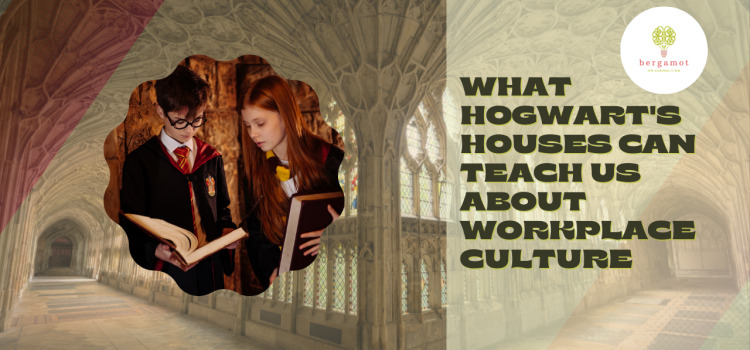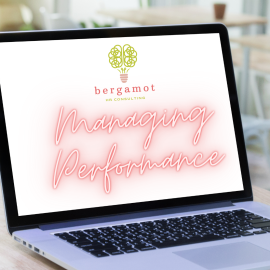
If you are a fan of Harry Potter, you probably know about the Sorting Hat, the magical hat that assigns each student to one of the four houses of Hogwarts: Gryffindor, Hufflepuff, Ravenclaw, or Slytherin. The Sorting Hat is not just a random device; it chooses the house that best matches the student’s personality, values, and aspirations. In other words, it sorts them based on their culture fit.
Culture fit is a term that describes how well an employee aligns with the existing culture of an organisation. It is often used as a criterion for hiring and retaining talent, as it is believed that employees who fit in well with the company culture will be more productive, loyal, and satisfied. However, culture fit also has some drawbacks. It can lead to a lack of diversity, innovation, and inclusion in the workplace, as well as reinforce biases and stereotypes.
That’s why some experts suggest that instead of hiring for culture fit, we should hire for culture add. Culture add is a term that describes how an employee can bring something new and valuable to the company culture. It is not about finding candidates who are exactly like the existing workforce, but rather candidates who can complement and enrich the culture with their unique perspectives, experiences, and skills.
In this blog post, I have tried to imagine how the four Hogwarts houses would function as organisations, based on their characteristics and values. I’ve drawn out the strengths and drawbacks of each culture, and suggested ways to mitigate against the drawbacks.
Gryffindor Culture: Courage, Chivalry and Daring in the Workplace
This organisation would be characterised by courage, daring, and adventure. The employees would be passionate, enthusiastic, and loyal to their cause. They would take risks, challenge the status quo, and strive for excellence. The workplace culture would be dynamic, energetic, and fun.
Positive aspects of this organisation would be its ability to innovate, inspire, and overcome obstacles. A Gryffindor workplace culture values bravery, taking risks, and standing up for what is right. This can lead to a dynamic environment where innovation thrives and employees are encouraged to pursue ambitious goals.
Negative aspect would be its tendency to act impulsively, recklessly, or arrogantly, which could lead to conflicts, mistakes, or accidents. The competitive atmosphere may overshadow collaboration.
To offset the negative aspects of impulsiveness, recklessness, or arrogance, this organisation could foster a culture of reflection, feedback, and humility. This means encouraging employees to think before they act, seek and accept constructive criticism, and acknowledge their mistakes and limitations. This could help them to avoid unnecessary risks, learn from their failures, and respect other perspectives. Calculated risk-taking should be encouraged, and teamwork should be rewarded as much as individual heroics.
Slytherin Traits for Success: Ambition, Resourcefulness and Leadership Skills
This organisation would be ambitious, cunning, and resourceful. The employees would be determined, confident, and influential. They would pursue their goals, interests, and opportunities. The workplace culture would be competitive, strategic, and powerful.
Positive aspects of this organisation would be its success, leadership, and resilience. Slytherin cultures appreciate ambition, cunning, and resourcefulness. This can create a powerful drive for efficiency and achievement.
Negative aspects would include its tendency to manipulate, exploit, or dominate, which could lead to unethical behaviour, hostility, or corruption, cutthroat tactics and a ‘win at all costs’ mentality.
To offset the negative aspects of manipulation, exploitation, or domination, this organisation could foster a culture of ethics, empathy, and cooperation. This means encouraging employees to act with honesty, integrity, and respect for others and recognising and rewarding them for it. By emphasising ethical standards and long-term relationships over short-term gains, organisations can cultivate a more sustainable Slytherin culture. This could help them to avoid unethical behaviour, hostility, or corruption, and instead build trust, loyalty, and goodwill with their stakeholders.
Ravenclaw Wisdom: A Culture of Learning and Innovation
This organisation would be focused on intelligence, creativity, and learning. The employees would be curious, knowledgeable, and original. They would seek new information, ideas, and solutions. The workplace culture would be stimulating, challenging, and diverse.
Positive aspects of this organisation would be its expertise, innovation, and excellence. Ravenclaw cultures prioritise intelligence, knowledge, and wit. Workplaces with these values are likely to be forward-thinking and open to new ideas.
Negative aspects would be its tendency to overthink, complicate, or isolate, which could lead to confusion, inefficiency, or detachment. An overly competitive environment where only the ‘smartest’ ideas win out could potentially stifle diverse perspectives.
To offset the negative aspects of overthinking, complicating, or isolating, this organisation could foster a culture of simplicity, clarity, and collaboration. This means encouraging employees to communicate effectively, focus on the essentials, and work with others. This could help them to avoid confusion, inefficiency, or detachment, and instead achieve better results, faster and easier. Promoting a culture of shared knowledge and collective success can help ensure that all voices are heard and valued.
Hufflepuff Values: Loyalty, Dedication and Hard Work as the Foundation of a Healthy Workplace
This organisation would be motivated by hard work, dedication, and fairness. The employees would be humble, reliable, and cooperative. They would value quality, consistency, and integrity. The workplace culture would be supportive, friendly, and respectful.
Positive aspects of this organisation would be its stability, loyalty, and trustworthiness. Hufflepuff cultures are built on fairness, loyalty, and hard work. Such an environment promotes a supportive and inclusive workplace where everyone’s contribution is valued.
Negative aspects would be its difficulty to adapt, change, or stand out, which could make it vulnerable to competition, stagnation, or complacency and resistance to change.
To offset the negative aspects of difficulty to adapt, change, or stand out, this organisation could strive for a culture of agility, innovation, and recognition. This means encouraging employees to embrace change, experiment with new ideas, and celebrate their achievements. This could help them to respond to changing needs, create value for customers, and boost their confidence and motivation. Encouraging continuous learning and personal development can help mitigate these negatives, keeping the team adaptive and proactive.
Conclusion: The ‘What If’ of Harry’s Sorting
Had the Sorting Hat placed Harry in Slytherin, it’s intriguing to speculate how this would have shaped his character. Slytherin’s emphasis on cunning and ambition could have honed Harry’s leadership skills in a different light, possibly leading him to approach challenges with more guile than gallantry.
It suggests that individuals can thrive under various cultural conditions if their core values are nurtured correctly.
Similarly, organisations must recognise the potential within their employees to contribute uniquely to the workplace culture, whether they fit the mould or add to it.
Are you losing valuable time or sleep over HR worries?
Get in touch to arrange a no obligation chat to find out how I can help you



